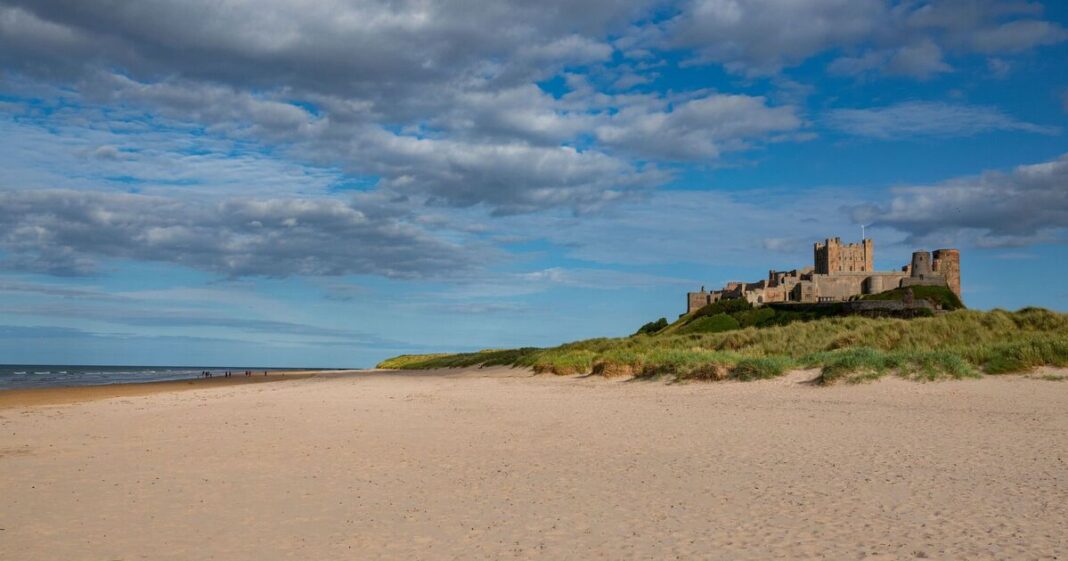It is larger than Cornwall but with far fewer visitors, less crowds, less traffic and cheaper too! This beautiful under-rated country boasts some of the best beaches in the UK, but people are cottoning on and the number of visitors here is on the rise.
Around 19 million holidaymakers and day trippers visit Cornwall every year, almost double the number that visit this particular county, even though it boasts just as many fabulous beaches, historic castles and pretty seaside towns.
By contrast, around 10 million visit here, but those numbers are rising, and last year tourism to the county was worth a record £1.4 billion to its local economy.
With its rich history, especially its numerous castles and Roman ruins, it is also famous for its stunning and tranquil natural landscapes, including the most sparsely populated national park in the UK and pristine coastline with wide sandy beaches. The area is also a backdrop for films and TV shows.
Situated on the border with Scotland, it is bordered by the North Sea to the east, Tyne and Wear and County Durham to the south and Cumbria to the west area to the north. Northumberland is the northernmost county in England.
The west of Northumberland contains part of the Cheviot Hills and North Pennines while to the east the land becomes flatter before reaching the coast.
Northumberland saw a strong uplift in day visitors, with visitor numbers reaching 8.601 million in 2024, representing a 4.1% increase on 2023. But the county only receives around 10 million visitors a year compared to 19 million trekking to the other end of the country to Cornwall.
New data reveals that tourism was worth a record-breaking £1.443 billion to Northumberland’s economy in 2024.
“We are incredibly proud of the growth in both day and staying visitors, the increased length of stay, and the higher economic value generated by tourism in 2024,” commented Andrew Fox, Chair of Visit Northumberland.
Northumberland has plenty of stunning seaside towns to explore. Bamburgh is known for its dramatic coastal scenery and castle while Alnmouth has a charming seaside atmosphere. Then there is Corbridge with its historic and pictireque inland setting. Blanchland is often cited as one of the prettiest in the UK for its fairytale feel.
While Cornwall sees around 5 million overnight visitors and 14 million daytrippers annually, generating £2 billion in visitor spending, Northumberland’s visitors total around 10 million, resulting in fewer crowds.
Northumberland is also bigger in size than Cornwall. Northumberland covers an area of approximately 5,013 km² (1,936 mi²), while Cornwall covers an area of approximately 3,546 km² (1,375 mi²). Northumberland is the second-largest unitary authority area in England, after North Yorkshire, by land area. Cornwall is the fourth-largest.
Among the best beaches in Northumberland are Bamburgh for its iconic castle views, Beadness Bay for watersports and long walks, and Alnmouth for its beauty. Embleton Bay, Sugar Sands and Cresswell Beach which offer golden sands, rockpooling, and family-friendly environments.
Rachael Stray, a blogger who writes about the North-East of England said: “Northumberland has so much to offer from golden beaches, dramatic hills, lush wide-open spaces and a turbulent historic past to explore.
“Avid readers will know I am a proud Geordie but since moving back to my native North East last year I’ve been showing my hubby the delights of Northumberland too.
“If you love the feel of golden sand beneath you toes and that salty sea air filling your nostrils then a visit to the magnificent coastline should certainly satisfy you.
There’s more than 30 miles of beaches along the spectacular Northumberland Coast with retro-chic seaside towns such as Seahouses where you can promenade along the pier, play at the penny arcades and tuck into the obligatory fish and chips.”


